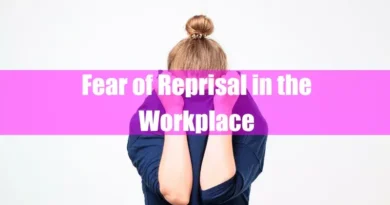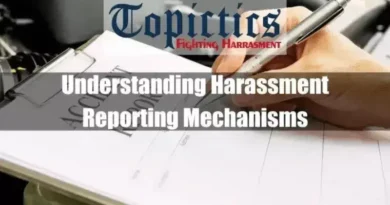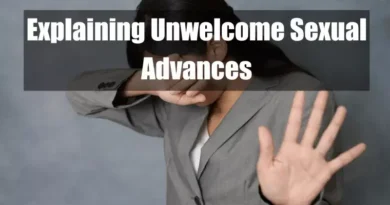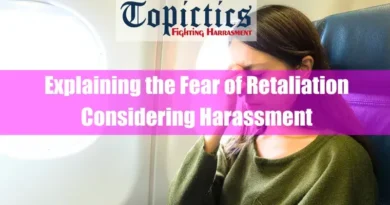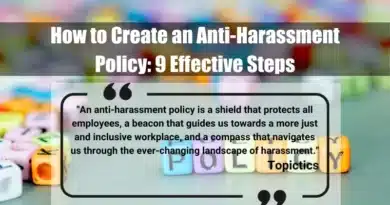Addressing Sexual Harassment in Disability
Takeaways
| Key Points |
|---|
| Sexual harassment within the disability community is a complex issue influenced by power dynamics, systemic failures, and exploitation, with individuals with disabilities facing disproportionately high risks of abuse. |
| Data from the Bureau of Justice Statistics highlights this alarming prevalence, showing that individuals with disabilities are over three times more likely to experience violent crimes like rape and sexual assault, with compounded risks for those with multiple or intellectual disabilities. |
| The forms of harassment—physical, verbal, and non-verbal—are often exacerbated by caregivers or professionals exploiting positions of trust, while coercion and the victim’s dependence on essential care further complicate their ability to resist or report abuse. |
| Harassment occurs in diverse settings, such as workplaces, educational institutions, and care facilities, where power imbalances and inaccessible reporting mechanisms create additional barriers for victims. |
| Legal protections, including the ADA, Title VII, and EEOC guidelines, play a critical role, but ongoing challenges require robust enforcement, targeted accommodations, and a commitment to addressing the unique vulnerabilities faced by this population both domestically and internationally. |
Introduction
Sexual harassment is a pervasive issue that affects individuals across all demographics. Still, when it intersects with disability, the consequences can be particularly severe. Individuals with disabilities often find themselves in vulnerable positions where their rights and dignity are at greater risk of being compromised.
The issue of sexual harassment in the disability community is not only about inappropriate behavior; it is about power dynamics, exploitation, and the systemic failures that allow such abuses to occur.
The prevalence of sexual harassment among individuals with disabilities is alarmingly high. According to the Bureau of Justice Statistics’ 2009–2014 National Crime Victimization Survey, people with disabilities were more than three times more likely than nondisabled people to experience serious violent crimes such as rape and sexual assault. Additionally, having multiple disabilities can increase a person’s risk of rape and sexual assault, and children with mental health or intellectual disabilities are almost five times more likely than their nondisabled peers to experience sexual abuse.
These statistics underscore the critical need for a focused examination of the unique challenges and impacts of sexual harassment on this population. The intersection of disability and sexual harassment requires targeted legal protections, preventative measures, and robust support systems to address the distinct needs of individuals with disabilities.

Types of Sexual Harassment Experienced by Individuals with Disabilities
Physical, Verbal, and Non-Verbal Harassment
Sexual harassment can manifest in various forms, each with its own set of challenges for individuals with disabilities. Physical harassment may include unwanted touching, assault, or any other form of physical contact that is sexual in nature. Verbal harassment, on the other hand, can involve inappropriate comments, sexual jokes, or propositions. Non-verbal harassment might include gestures, lewd looks, or the sharing of explicit content.
For individuals with disabilities, these forms of harassment are often compounded by their reliance on others for personal care, which can create situations where boundaries are more easily violated.
Caregivers or medical professionals may exploit their positions of trust, making it difficult for victims to assert their autonomy or report the abuse. This exploitation is further exacerbated when the harasser is someone on whom the victim is dependent for daily care or mobility assistance.
Coercion and Exploitation of Vulnerability
Coercion in the context of sexual harassment involves pressuring someone into sexual acts against their will. For individuals with disabilities, coercion often takes advantage of their dependence on others. Harassers may threaten to withdraw essential care or manipulate the individual into believing they have no other options.
The power imbalance between the harasser and the victim is stark, making it difficult for the victim to refuse advances or escape the situation.
Exploitation of vulnerability is another common tactic used by harassers. This can involve taking advantage of cognitive impairments, communication barriers, or the victim’s social isolation. Individuals with intellectual disabilities are particularly at risk, as they may not fully understand what is happening or may struggle to communicate their distress.
Harassment in Different Settings (Workplace, Educational Institutions, Care Facilities)
Sexual harassment can occur in a variety of settings, each presenting unique challenges for individuals with disabilities. In the workplace, individuals with disabilities may face discrimination and harassment from colleagues or supervisors. The power dynamics in employment can make it difficult for victims to report the harassment, especially if they fear retaliation or job loss.
In educational institutions, students with disabilities may be targeted by peers or educators. The lack of accessible reporting mechanisms can further silence these students, leaving them vulnerable to continued abuse. Similarly, in care facilities, residents may experience harassment from staff or other residents.
The institutional setting can create an environment where abuse is normalized or overlooked, making it even harder for victims to seek help.
Impact of Sexual Harassment on Individuals with Disabilities

Psychological and Emotional Consequences
The psychological impact of sexual harassment on individuals with disabilities can be profound. Victims often experience a range of emotions, including fear, shame, and helplessness. These feelings can be intensified by the individual’s pre-existing mental health conditions, which the trauma of harassment may exacerbate. The psychological toll can lead to long-term mental health issues such as depression, anxiety, and post-traumatic stress disorder (PTSD).
Moreover, individuals with disabilities may have limited access to mental health services, making it difficult for them to receive the support they need.
The stigma surrounding both disability and sexual abuse can also prevent victims from seeking help, further isolating them and compounding their emotional distress.
Physical Health Impacts
Sexual harassment can have significant physical health consequences for individuals with disabilities. The stress and trauma associated with harassment can lead to a decline in overall health, particularly for those with chronic conditions.
Physical injuries resulting from sexual assault may also be more severe for individuals with disabilities, especially if they are unable to defend themselves or escape the situation.
In addition, the fear of harassment can cause individuals to avoid necessary medical care or limit their social interactions, leading to a deterioration in their physical well-being. This avoidance can result in a lack of preventive care, exacerbating existing health issues and leading to further disability.
Social and Economic Ramifications
The social impact of sexual harassment on individuals with disabilities can be devastating. Victims may withdraw from social activities, leading to increased isolation and loneliness. This isolation can be particularly harmful for individuals with disabilities, who may already face challenges in building and maintaining social connections.
Economically, the consequences can be equally severe. Victims of harassment may lose their jobs or drop out of educational programs, leading to financial instability. The loss of income or educational opportunities can have long-term effects on their ability to achieve financial independence and access resources that could improve their quality of life.
Legal Framework and Protections
Overview of Key Legislation (ADA, Title VII, EEOC Guidelines)
The legal framework for addressing sexual harassment in disability includes several key pieces of legislation. The Americans with Disabilities Act (ADA) provides broad protections against discrimination for individuals with disabilities, including in cases of sexual harassment.
Title VII of the Civil Rights Act of 1964 also plays a crucial role, prohibiting employment discrimination based on sex, which encompasses sexual harassment.
The Equal Employment Opportunity Commission (EEOC) provides guidelines for employers to prevent and address sexual harassment in the workplace. These guidelines emphasize the importance of creating a harassment-free environment and outline the responsibilities of employers in handling complaints.
The EEOC’s guidelines are particularly important for individuals with disabilities, highlighting the need for accessible reporting mechanisms and accommodations during investigations.
Specific Protections for Individuals with Disabilities
In addition to the general protections provided by the ADA and Title VII, there are specific provisions that protect individuals with disabilities from discrimination, which includes harassment. The ADA requires employers to provide reasonable accommodations for employees with disabilities.
This can include modifications to ensure that harassment complaints are handled appropriately and that communication methods are accessible.
Furthermore, the Rehabilitation Act of 1973, which applies to federal agencies and programs receiving federal funding, prohibits discrimination against individuals with disabilities. While it does not specifically mention sexual harassment, it mandates that these entities take proactive steps to prevent and address all forms of harassment, ensuring that individuals with disabilities have equal access to services, opportunities, and a safe working environment.
Recent Legal Updates and Court Cases
Recent legal developments have reinforced the protections available to individuals with disabilities who experience sexual harassment. In recent years, courts have increasingly recognized the unique vulnerabilities of this population and the need for tailored legal responses. For example, recent EEOC rulings have clarified that employers must consider the specific needs of employees with disabilities when addressing harassment complaints.
High-profile court cases have also brought attention to the issue, leading to greater awareness and more robust enforcement of existing laws. These cases have highlighted the importance of holding institutions accountable for failing to protect individuals with disabilities from harassment, setting important precedents for future legal action.
International Perspectives and Comparative Laws
Internationally, the protection of individuals with disabilities from sexual harassment varies widely. Legal frameworks like the ADA exist in some countries, providing strong protections and avenues for redress. However, in other regions, the rights of individuals with disabilities are less clearly defined, and enforcement mechanisms are often weak.
The United Nations Convention on the Rights of Persons with Disabilities (CRPD) sets out international standards for the protection of individuals with disabilities, including their right to live free from abuse and exploitation.
Countries that are signatories to the CRPD are obligated to implement measures to prevent and address sexual harassment. Still, the effectiveness of these measures varies depending on local laws and cultural attitudes.
Preventative Measures and Best Practices

Creating Inclusive and Safe Environments
Preventing sexual harassment in the disability community requires the creation of inclusive and safe environments. This involves not only physical accessibility but also fostering a culture of respect and dignity. Organizations must proactively identify potential risks and implement measures to mitigate them. This can include designating safe spaces, ensuring that all areas are accessible, and providing clear guidelines on appropriate behavior.
Implementing Effective Training Programs
Training is a critical component of preventing sexual harassment. Organizations should provide regular, comprehensive training for all employees, including those with disabilities. This training should cover the nature of sexual harassment, the rights of individuals with disabilities, and the specific challenges they may face.
It is also important to train staff to respond to harassment complaints, ensuring that they can provide support sensitively and effectively.
Developing Accessible Reporting and Support Systems
Reporting mechanisms must be accessible to all individuals, including those with disabilities. This means providing multiple avenues for reporting harassment, such as hotlines, online forms, and in-person options.
These systems should be designed with accessibility in mind, ensuring that individuals with different types of disabilities can use them without barriers. Support services, such as counseling and legal assistance, should also be available to help victims navigate the reporting process and recover from their experiences.
Role of Employers, Educators, and Caregivers
Employers, educators, and caregivers play a crucial role in preventing and addressing sexual harassment. They are often the first line of defense in protecting individuals with disabilities and have a responsibility to create environments where harassment is not tolerated.
This includes enforcing zero-tolerance policies, training, and ensuring victims feel safe coming forward. Given the vulnerability of residents, it is particularly important to have clear protocols for reporting and addressing harassment in care settings.

Role of Advocacy and Support Organizations
Overview of Major Advocacy Groups
Several advocacy groups are dedicated to supporting individuals with disabilities, particularly in the context of sexual harassment. Organizations like the National Disability Rights Network (NDRN) and the ADA National Network provide essential resources and legal support for harassment victims.
These groups play a pivotal role in advocating for the rights of individuals with disabilities, offering guidance on legal recourse, and pushing for policy changes at the state and federal levels.
The NDRN, for example, is a federally mandated protection and advocacy (P&A) system that operates in every state. It provides legal advocacy, information, and referral services to individuals with disabilities who have experienced sexual harassment. Similarly, the ADA National Network offers training and technical assistance on the Americans with Disabilities Act (ADA), helping to ensure that individuals with disabilities are aware of their rights and know how to access the protections afforded to them under the law.
Resources and Support Services Available
These organizations offer a range of resources to support individuals with disabilities who have experienced sexual harassment. This includes legal assistance, counseling services, and educational materials to inform individuals of their rights. For example, the NDRN provides detailed guides on how to file complaints, what to expect during legal proceedings, and how to access local support services.
Additionally, many advocacy groups work to raise public awareness about the issue of sexual harassment in the disability community. They conduct outreach programs, organize workshops, and collaborate with other organizations to support victims comprehensively.
These efforts are crucial in ensuring that individuals with disabilities have the resources they need to address and recover from their experiences.
The Role of Legal Advocacy and Counseling Services
Legal advocacy is a critical component of addressing sexual harassment in the disability community. Advocacy organizations often provide free or low-cost legal services to individuals with disabilities, helping them navigate the complex legal landscape and fight for their rights. This legal support can include representation in court, assistance with filing complaints, and guidance on pursuing civil litigation.
Counseling services are also vital in helping victims cope with the trauma of sexual harassment. Many advocacy groups offer access to mental health professionals who are trained to work with individuals with disabilities. These counselors can provide therapy, support groups, and other emotional assistance, helping victims process their experiences and begin healing.
Conclusion
Addressing sexual harassment in the disability community requires a multifaceted approach that includes strong legal protections, effective prevention strategies, and comprehensive support systems. Organizations, employers, and caregivers must work together to create environments where individuals with disabilities feel safe and supported.
By raising awareness, providing resources, and advocating for stronger protections, we can help to ensure that the rights and dignity of individuals with disabilities are respected and upheld.
Sexual harassment is a violation of human rights, and for individuals with disabilities, the stakes are even higher. As a society, we must be vigilant in our efforts to combat this issue, ensuring that all individuals, regardless of their abilities, have the opportunity to live free from harassment and abuse.
FAQ
What constitutes sexual harassment against individuals with disabilities?
Sexual harassment against individuals with disabilities includes unwelcome sexual advances, requests for sexual favors, and other verbal or physical conduct of a sexual nature. This behavior can exploit the individual’s disability, creating a hostile environment that impedes their ability to function or participate in various settings.
Are people with disabilities more vulnerable to sexual harassment?
Yes, individuals with disabilities are at a higher risk of sexual harassment and assault. Factors such as dependence on caregivers, communication barriers, and societal stigmas contribute to this increased vulnerability, making them frequent targets for such misconduct.
How can I recognize signs of sexual harassment in someone with a disability?
Indicators may include sudden behavioral changes, unexplained injuries, withdrawal, or anxiety around certain individuals. It’s crucial to be attentive, as some individuals might have difficulty communicating their experiences due to their disabilities.
What should I do if I suspect a person with a disability is being sexually harassed?
If you suspect sexual harassment, ensure the individual’s immediate safety, report your concerns to appropriate authorities or organizations, and support the individual. It’s essential to handle the situation with sensitivity and confidentiality.
Are there specific laws protecting individuals with disabilities from sexual harassment?
Yes, various laws protect individuals with disabilities from sexual harassment. For instance, the Americans with Disabilities Act (ADA) prohibits discrimination based on disability, and Title IX addresses sexual harassment in educational settings. The California Fair Employment and Housing Act also protects against such misconduct.
How can organizations prevent sexual harassment of individuals with disabilities?
Organizations can implement comprehensive training programs that address the unique vulnerabilities of individuals with disabilities, establish clear reporting mechanisms, and foster an inclusive culture that emphasizes respect and zero tolerance for harassment.
What role do caregivers play in preventing sexual harassment of those with disabilities?
Caregivers are pivotal in prevention efforts. They should be trained to recognize signs of abuse, establish trust with the individuals they support, and maintain professional boundaries to ensure a safe environment.
How does sexual harassment impact individuals with disabilities differently?
The impact can be profound, leading to increased feelings of isolation, exacerbation of existing conditions, and heightened psychological distress. The trauma may also hinder their ability to seek help or communicate their experiences effectively.
Are educational institutions required to address sexual harassment involving students with disabilities?
Yes, educational institutions are mandated to address such incidents. Under Title IX, schools must take immediate and appropriate action to investigate and resolve complaints of sexual harassment, ensuring the safety and rights of students with disabilities.
Where can individuals with disabilities seek help if they experience sexual harassment?
Individuals can reach out to organizations like RAINN, which offers resources for survivors with disabilities. Additionally, local advocacy groups, legal aid services, and disability rights organizations can provide support and guidance tailored to their needs.
Is it illegal to harass a disabled person?
Yes, harassing a person with a disability is illegal. In the United States, laws such as the Americans with Disabilities Act (ADA) and Section 504 of the Rehabilitation Act prohibit discrimination and harassment based on disability in various settings, including employment and education.




